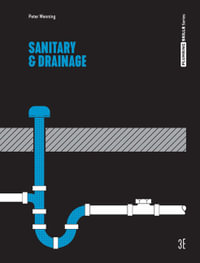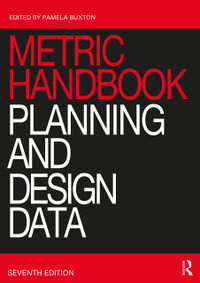| List of case studies | p. ix |
| List of figures | p. xi |
| List of tables | p. xv |
| List of graphs | p. xv |
| Acknowledgement | p. xvii |
| Foreword | p. xxi |
| Introduction | p. 1 |
| Policy & strategic context | p. 11 |
| The nature of infrastructure projects | p. 13 |
| Introduction | p. 13 |
| Concept of 'infrastructure' | p. 14 |
| Types of physical infrastructure | p. 16 |
| Infrastructure development | p. 17 |
| Toward a service-focused approach | p. 25 |
| Case studies | p. 26 |
| Summary | p. 30 |
| References | p. 30 |
| Determination and selection of infrastructure policy | p. 32 |
| Introduction | p. 32 |
| The policy framework | p. 33 |
| Determinants of public and private participation | p. 40 |
| Case studies | p. 47 |
| Summary | p. 49 |
| References | p. 50 |
| Strategic considerations for infrastructure development | p. 52 |
| Introduction | p. 52 |
| Key elements of infrastructure strategy | p. 53 |
| Infrastructure development processes | p. 58 |
| Infrastructure service delivery chain | p. 62 |
| Infrastructure decision-making hierarchy | p. 65 |
| Level of service indicators | p. 67 |
| Demand and supply management issues | p. 68 |
| Strategic hard and soft variables | p. 69 |
| Case studies | p. 70 |
| Summary | p. 74 |
| References | p. 75 |
| Implementation issues | p. 77 |
| Project evaluation and resources | p. 79 |
| Introduction | p. 79 |
| Macro or key contextual variables | p. 80 |
| Micro or project-specific variables | p. 84 |
| Resource implications of infrastructure projects | p. 87 |
| Infrastructure evaluation models | p. 92 |
| The InfORMED approach | p. 94 |
| Case studies | p. 103 |
| Summary | p. 107 |
| References | p. 107 |
| Infrastructure project procurement | p. 110 |
| Introduction | p. 110 |
| Elements of infrastructure procurement strategy | p. 112 |
| Project evaluation | p. 117 |
| Drivers for infrastructure procurement selection | p. 118 |
| Framework for procurement delivery | p. 119 |
| Procurement methods | p. 121 |
| Other procurement considerations | p. 126 |
| Innovative procurement options | p. 127 |
| Infrastructure procurement selection using a portfolio-based strategy | p. 130 |
| Procurement of infrastructure in developing countries | p. 132 |
| Selection of bidders | p. 137 |
| Information provided for the bidders | p. 139 |
| Evaluation of bids | p. 139 |
| Case studies | p. 140 |
| Summary | p. 142 |
| References | p. 143 |
| The financing of infrastructure projects | p. 145 |
| Introduction | p. 145 |
| Financing policy and strategy | p. 146 |
| Public provision of infrastructure finance | p. 148 |
| Private provision of infrastructure finance | p. 150 |
| Public-private partnerships (PPP) | p. 152 |
| Project financial analysis | p. 153 |
| Using uncertainty to determine NPVs | p. 160 |
| Project risk analysis | p. 162 |
| Inflation | p. 165 |
| Cost of borrowing | p. 167 |
| Stochastic decision trees | p. 168 |
| Risk assessment using Monte-Carlo simulation | p. 172 |
| Financial appraisal of bidders | p. 176 |
| Project financial monitoring and control | p. 178 |
| Case studies | p. 182 |
| Summary | p. 184 |
| References | p. 185 |
| Funding infrastructure projects in developing countries | p. 186 |
| Introduction | p. 186 |
| The need for funding infrastructure | p. 187 |
| Bilateral and multilateral funding | p. 188 |
| Private sector funding | p. 196 |
| Co-financing infrastructure | p. 199 |
| Conflicting issues in co-financing | p. 202 |
| Lending conditions and sector priorities | p. 202 |
| Project appraisal | p. 204 |
| Cost-sharing and foreign currency constraints | p. 205 |
| Cross default and other conditional clauses | p. 206 |
| Other funding considerations | p. 206 |
| Project identification capacity | p. 206 |
| Risk analysis and management | p. 208 |
| Case studies | p. 209 |
| Summary | p. 214 |
| References | p. 216 |
| Operational considerations | p. 219 |
| Towards sustainable infrastructure and conservation | p. 221 |
| Introduction | p. 221 |
| Definition of sustainable development | p. 223 |
| Models of sustainable development | p. 223 |
| Why sustainable design and construction? | p. 225 |
| Strategy for sustainability and conservation | p. 226 |
| Operational considerations for sustainability and conservation | p. 229 |
| Climate change and global warming | p. 229 |
| Towards a low-carbon economy | p. 231 |
| Zoning of land | p. 232 |
| Impact of physical infrastructure | p. 232 |
| Assessment methodologies | p. 239 |
| Environmental or thematic indicators | p. 239 |
| Environmental impact assessment (energy) | p. 241 |
| Assessment for building-type infrastructure | p. 243 |
| Justification of sustainable construction | p. 245 |
| Case studies | p. 246 |
| Summary | p. 250 |
| References | p. 251 |
| Facility management of infrastructure | p. 253 |
| Introduction | p. 253 |
| Operational context | p. 254 |
| Performance indicators | p. 258 |
| Design quality indicators | p. 259 |
| Facility management framework | p. 260 |
| Statutes and legal requirements | p. 265 |
| Life cycle appraisal (LCA) | p. 268 |
| Life cycle appraisal (LCA) for PPP projects | p. 270 |
| Proposed basis for an FM visualisation model | p. 272 |
| Operational facilities management | p. 275 |
| Role of the client | p. 276 |
| Packaging and outsourcing contracts | p. 277 |
| Service level and contractual arrangements | p. 278 |
| Facilities condition management system | p. 281 |
| Financial management and cost control | p. 281 |
| Application of facilities management to PPP | p. 282 |
| Case studies | p. 284 |
| Summary | p. 286 |
| References | p. 287 |
| Conclusion and future horizons | p. 289 |
| Introduction | p. 289 |
| Physical infrastructure policy framework | p. 290 |
| Developing strategy | p. 292 |
| A total approach to the provision of physical infrastructure | p. 293 |
| Sustainable infrastructure | p. 296 |
| The concept of service delivery | p. 303 |
| Innovation in project finance | p. 305 |
| Risk management of infrastructure projects | p. 309 |
| Summary | p. 310 |
| References | p. 312 |
| Tables | p. 313 |
| Index | p. 323 |
| Table of Contents provided by Ingram. All Rights Reserved. |
























